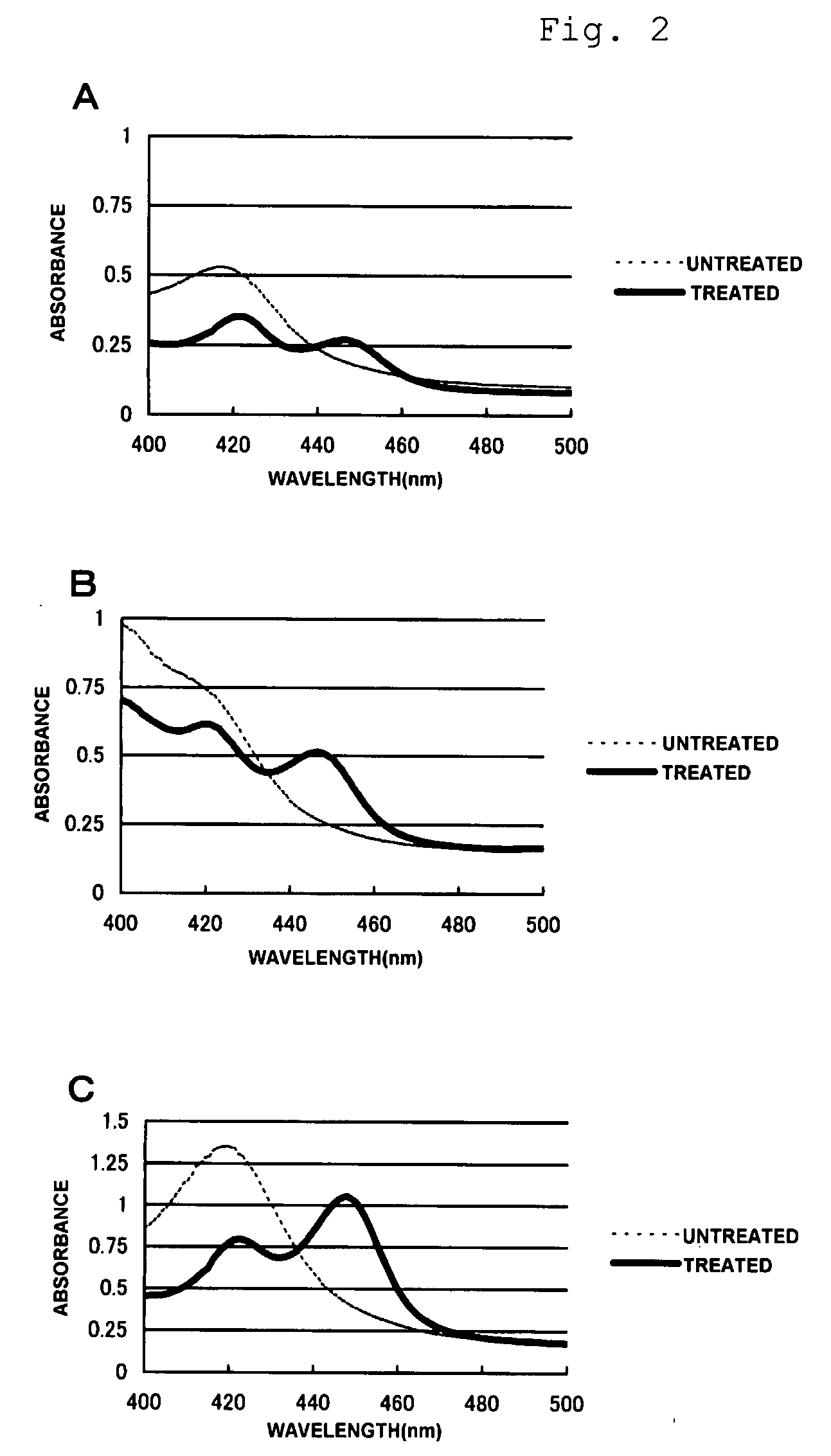Method of Isolating P450 Gene
a p450 gene and gene technology, applied in the field of isolating p450 genes, can solve the problems of difficult isolation of p450 genes, lack of primers that can efficiently isolate p450 genes from known sequences, and limited number of types of identified microbial p450s. achieve the effect of efficient isolating and high throughput screening
- Summary
- Abstract
- Description
- Claims
- Application Information
AI Technical Summary
Benefits of technology
Problems solved by technology
Method used
Image
Examples
example 1
Preparation of Environmental DNAs
[0122]In order to obtain P450 genes, various DNAs were extracted from environmental samples described below.
1. Samples Obtained from the Waters Off Palau or Ponape
[0123]The following technique has been disclosed: a technique for immersed a carrier containing a culture medium in seawater and then efficiently recovering DNAs from microorganisms attached to the carrier (Japanese Unexamined Patent Application Publication No. 2003-334064). In this example, sterile artificial sponges were immersed in an NSW culture medium (0.1% NH4NO3, 0.002% ferric citrate, 0.002% K2HPO4, 0.05% yeast extract solution, 80% filtered seawater, and 1.5% agar), whereby the medium was allowed to permeate the artificial sponges. The agar in the medium was then solidified. The artificial sponges were placed in positions 5 to 6 m above the bottom of the waters off State of Ponape, Federated States of Micronesia, or the bottom of the waters off Republic of Palau. The artificial spo...
example 2
Design of PCR Primers
[0126]The inventors have discovered that there are two conserved regions, that is, MFIAMDPP (located close to the N-terminus) and HRCMGNRL (located close to the C-terminus) in an alignment of three amino acid sequences, that is, CYP153A1 (accession no. AJ311718), CYP153A2 (accession no. AE005680), and CYP153A13a (SEQ ID NO: 58), belonging to the CYP153A subfamily of the disclosed P450 superfamily. The inventors designed four types of primers on the basis of amino acid sequences (MFIAMDPP and HRCMGNRL) in the two conserved regions. The designed primers were 5′-ATGTTYATHGCNATGGAYCCNC-3′ (SEQ ID NO: 53) located close to the conserved amino acid sequence MFIAMDPP (located close to the N-terminus) (SEQ ID NO: 51), 5′-CNGGRTCCATNGCDATRAACAT-3′ (SEQ ID NO: 54) that is a complementary chain thereof, 5′-NARNCKRTTNCCCATRCANCKRTG-3′ (SEQ ID NO: 55) located close to the conserved amino acid sequence HRCMGNRL (located close to the C-terminus) (SEQ ID NO: 52), and 5′-CAYMGNTG...
example 3
Amplification of P450 Gene
[0127]PCR amplification reactions were performed using the primer designed in Example 2 in such a manner that the DNAs prepared in Example 1 were used as templates. The primer of SEQ ID NO: 53 was used in combination with and the primer of SEQ ID NO: 55. Each reaction solution was prepared as follows: 0.5 unit of DNA polymerase Amplitaq Gold (Applied Biosystems), 5 μl of an attached polymerase buffer solution, 5 μl of a 2 mM dNTP solution, 4 μl of a 50 pmol / μl solution of one of the primers, 4 μl of a 50 pmol / μl solution of the other one, and 100 ng of one of the DNAs obtained from the environmental samples were mixed together and sterile water was then added to the mixture such that 50 μl of the reaction solution was obtained. In each reaction, denaturation was performed at 94° C. for 10 minutes, a cycle of treatment was repeated 35 times, and additional treatment was then finally performed at 72° C. for ten minutes, the treatment cycle being performed at ...
PUM
| Property | Measurement | Unit |
|---|---|---|
| pH | aaaaa | aaaaa |
| pH | aaaaa | aaaaa |
| pH | aaaaa | aaaaa |
Abstract
Description
Claims
Application Information
 Login to View More
Login to View More - R&D
- Intellectual Property
- Life Sciences
- Materials
- Tech Scout
- Unparalleled Data Quality
- Higher Quality Content
- 60% Fewer Hallucinations
Browse by: Latest US Patents, China's latest patents, Technical Efficacy Thesaurus, Application Domain, Technology Topic, Popular Technical Reports.
© 2025 PatSnap. All rights reserved.Legal|Privacy policy|Modern Slavery Act Transparency Statement|Sitemap|About US| Contact US: help@patsnap.com



